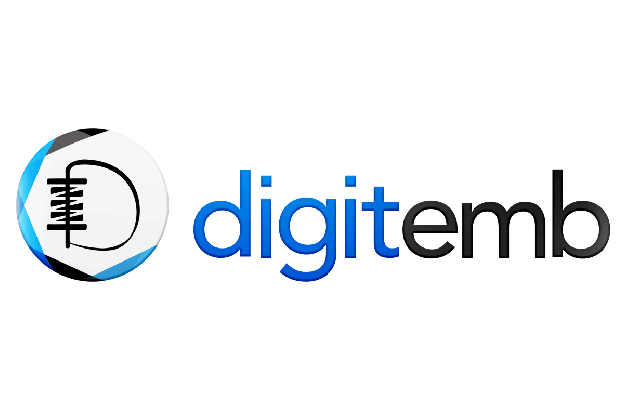Embroidery digitizing is a modern technique that turns artwork or logos into digital stitch files that embroidery machines can interpret. It’s the step that transforms creativity into precision, enabling designs to be embroidered flawlessly onto fabric, apparel, or custom patches. With expert digitizing, every line, curve, and detail of your artwork is recreated through threads with unmatched clarity and texture.
What Is Embroidery Digitizing?
Embroidery digitizing is the process of converting a design into a file format compatible with embroidery machines. Using specialized software, a digitizer maps each stitch, determines its direction, type, and density, and defines how the needle will move to create the final embroidered design.
Unlike simple image tracing, digitizing involves understanding how stitches behave on different fabrics. It’s a combination of art and technical skill that ensures the final embroidery looks crisp, professional, and durable.
Why Embroidery Digitizing Matters
Digitizing is the foundation of high-quality embroidery. Without accurate digitizing, even the most advanced machine can produce distorted or uneven stitches. Properly digitized files guarantee that every design maintains its shape, proportion, and detail no matter how many times it’s reproduced.
Main Benefits of Expert Digitizing
-
Produces clean and sharp embroidery results
-
Ensures consistent quality across multiple pieces
-
Reduces thread breaks and machine downtime
-
Allows easy resizing for various applications
-
Maintains design integrity across different materials
The Process of Embroidery Digitizing
Step 1: Artwork Preparation
The digitizing process begins with artwork analysis. The digitizer reviews the design to simplify complex areas, adjust dimensions, and ensure it can be effectively recreated with threads.
Step 2: Stitch Path Planning
The digitizer determines how the machine will move — setting the stitch order, path, and angles to ensure a smooth flow and efficient production.
Step 3: Stitch Type Selection
Different areas of a design require different stitch styles:
-
Satin Stitch – Used for borders, letters, and smaller shapes
-
Fill Stitch – Ideal for large solid areas
-
Running Stitch – Suitable for fine details and outlines
Step 4: Machine Testing
Before production, a test run (called a “sew-out”) is performed to check the accuracy of the digitized file. Adjustments are made to achieve perfect results.
Applications of Embroidery Digitizing
Custom Patches
Digitizing is crucial in creating custom embroidered patches with precise edges and fine details. It ensures that logos, emblems, and symbols appear vibrant and uniform, whether for fashion, corporate branding, or promotional use.
Corporate Apparel
Businesses use digitized embroidery for uniforms, caps, and jackets. Professionally digitized logos reflect quality, strengthening brand identity and professionalism.
Fashion and Accessories
From designer clothing to hats and bags, embroidery adds sophistication and depth. Digitizing allows brands to produce detailed artwork consistently across collections.
Personalized Items
Digitizing makes it possible to personalize towels, bags, and gifts with names, initials, and custom graphics, creating meaningful keepsakes.
The Role of Technology in Modern Embroidery Digitizing
Modern embroidery digitizing uses advanced software that offers realistic stitch simulation, allowing designers to preview how the final embroidery will look. These tools enable precise control over stitch length, density, and layering — but true mastery still depends on the skill of the digitizer.
A trained digitizer understands how fabric type, thread thickness, and tension interact — ensuring the design not only looks perfect on-screen but also performs flawlessly on fabric.
Qualities of a Good Digitizing Service
-
Attention to detail and design accuracy
-
Experience with multiple file formats (DST, PES, EMB, etc.)
-
Ability to handle complex artwork and 3D puff designs
-
Quick turnaround with consistent results
-
Expert understanding of embroidery machine requirements
Importance of Professional Digitizing for Patches
High-quality digitizing determines how professional your final embroidered patches look. Whether for military, sports teams, or fashion brands, precise digitizing ensures that even small text and intricate borders are stitched cleanly. It also helps reduce wasted materials by preventing thread breaks and misalignment during production.
Advantages of Professional Embroidery Digitizing
Consistency
Professional digitizing ensures your designs look identical every time they are stitched — maintaining quality across large production runs.
Durability
Well-digitized embroidery withstands washing, stretching, and wear without losing its shape or detail.
Versatility
Digitized designs can be used on multiple surfaces — from cotton and denim to leather and PVC patches — with minimal modification.
Why Businesses Choose Digitizing Services
For businesses that value presentation, embroidery digitizing provides a professional edge. It turns logos into long-lasting stitched art that represents the brand’s commitment to quality. From small boutiques to large-scale manufacturers, digitizing helps streamline production while ensuring the best possible embroidery results.
Conclusion
Embroidery digitizing is the cornerstone of every successful embroidery project. It blends creativity with precision, ensuring that every stitch contributes to a perfect final product. Whether for corporate branding, personalized apparel, or custom patch production, professional digitizing guarantees durability, detail, and beauty in every design.
Through careful planning, skilled execution, and advanced technology, embroidery digitizing transforms ordinary artwork into extraordinary embroidered creations that leave a lasting impression.





